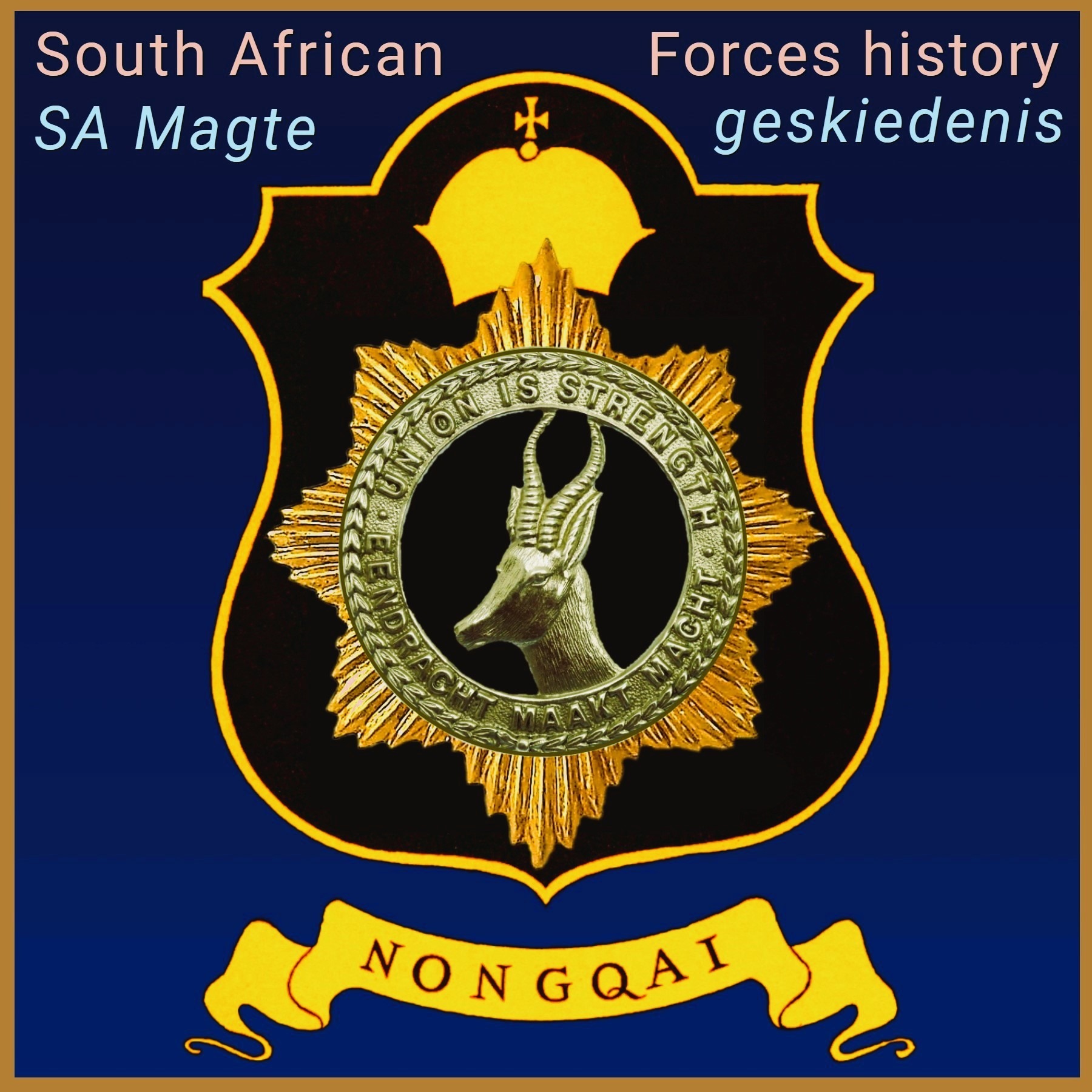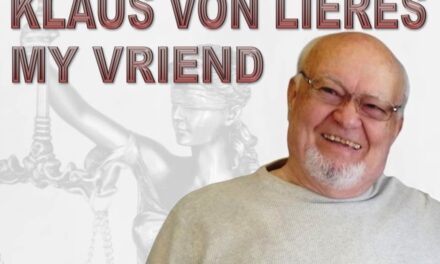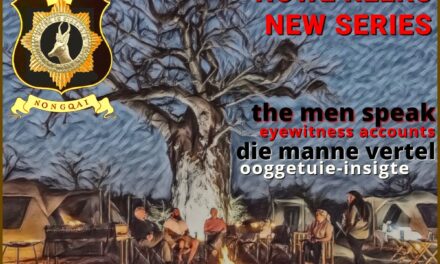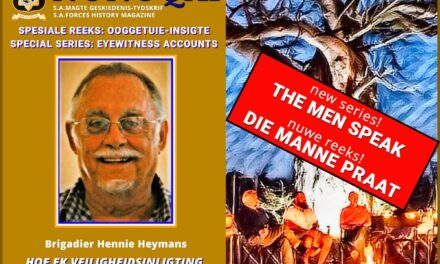Written by Anemari Jansen and George Archer
Roy Daryl Allen was born in the Moedersbond hospital in Pretoria on 15 February 1948. His grandfather was an Australian who had come out to South Africa during the Boer War, to fight for the British. The Allen family moved to Rhodesia for a short stint, after which they settled in Durban, in the suburb of Glenwood. He attended Marist Brothers in Durban.
After school Roy decided on a career in the SAP and was duly attested into the police force on 11 January 1966. He worked as a student constable at the Mowbray police station for about two weeks before he departed for Pretoria and the Police College. Roy`s parents gave him a new transistor radio, an admonition about the evils of drinking and R40 in cash.
In 1966 they were still issued with the Lee Enfield .303 rifle, and he received a small trophy for the best rifle shot in their troop. As a 19-year-old policeman, he applied for a cross transfer to radio control, better known as the Flying Squad.
Sometime early in 1968 the SAP was looking for volunteers to go to Ovamboland in Southwest Africa (Namibia). Roy applied and about a month later he was informed that he was being transferred to Oshakati. Around September of 1968 the district commandant decided to have a police presence at Ruacana, 200 km due west of Oshakati, near the Cunene River. Roy and Dirk Coetzee were nominated to go there.
After Oshakati and Ruacana Roy joined the Security Branch in Cape Town, from 1969 to 1972.
From 1972 to 1975 he was a member of BOSS (Bureau of State Security). Their offices were located on the top floor of the Metlife building, in Roeland Street, Cape Town, a mere stone’s throw from parliament.
Certain events during the mid-seventies led Roy to yet another move. He described it as follows in his unpublished manuscript: “In mid-1975 … David Protter, who had been working for the Israeli embassy in Johannesburg, besieged the embassy, killing a staff member and holding the rest hostage. The South African Police, at that stage, lacked the expertise and experience to manage the situation as they would wish. Fortunately, it ended peacefully when Lang Hendrik van den Bergh eventually talked him out of a potentially bad situation.
Note: This incident happened three years after the Munich Olympic massacre of Israeli athletes in 1972.
The incident jerked the police out of its lethargy and Colonels Dries Verwey and Bert Wandrag were sent on a fact-finding mission to the USA, UK, Germany, France, and Israel to assess these countries’ urban anti-terrorist SWAT units and to formulate a South African version.
Shortly thereafter, a Force Order was circulated, inviting volunteers to apply for selection to join the South African Police Special Task Force. I applied, and after attending a pre-selection interview with Verwey and Wandrag in Cape Town, was selected to attend the eight-week selection course at the SAP’s COIN training centre at Maleoskop, outside Groblersdal. Two other colleagues from Cape Town and I travelled by train to Maleoskop, arriving at night where we were put up in tents, where we stayed for the duration of the course.”
Physically and mentally, the course was extremely demanding.
About three weeks after the course Roy was informed that he had passed selection and would be transferred to Pretoria, to the brand-new Bosman Street police barracks. Their offices were the old Arcadia police station near the Union Buildings.
The South African Police Special Task Force also followed the lines of other special forces around the world:
You have never lived,
until you have almost died,
and for those who fight for it,
life has a splendour,
the protected will never know…
After three and a half years with the Task Force, Roy left to join the DMI (Directorate of Military Intelligence).
Roy joined the SADF on 1 September 1979 and was appointed as a staff sergeant with MCI (Military Counterintelligence). He was immediately involved in investigating security breaches within the SADF, as DMI was senior to Navy-, Air Force-, and Army Intelligence.
Whilst with DCI, he was nominated to go on an eight-week Agent Handling course with DCC (Directorate Covert Collection). The chief instructors were Colonels Kempen and Bloemhof, as well as Tolletjie Botha, who had all served as military attachés in Europe.
Roy also started studying Russian at the Directorate of Languages. They were taught by Prince Mansyreff, a Russian prince who had fled the Soviet Union and had taught Russian to NATO forces in Holland.
In 1983 he attended a three month SO-3 course at Voortrekkerhoogte, to qualify for promotion to major.
During April 1984, because of Roy`s previous experience in Ovamboland with the SAP, he was transferred, at short notice, to Oshakati.
In 1993 Roy left the SADF to move into the private security industry. He was employed by Gray Security Services to head up their new Avsec Division at Lanseria Airport, west of Johannesburg. They performed access control, perimeter protection and the X-ray scanning of passengers’ and hold baggage.
In 2001 Roy moved to Australia where he lived for approximately twelve years, until 2013, after which he later returned to South Africa.
Roy Daryl Allen passed away on the morning of 18 October 2023, in the Tshwane Hospital.
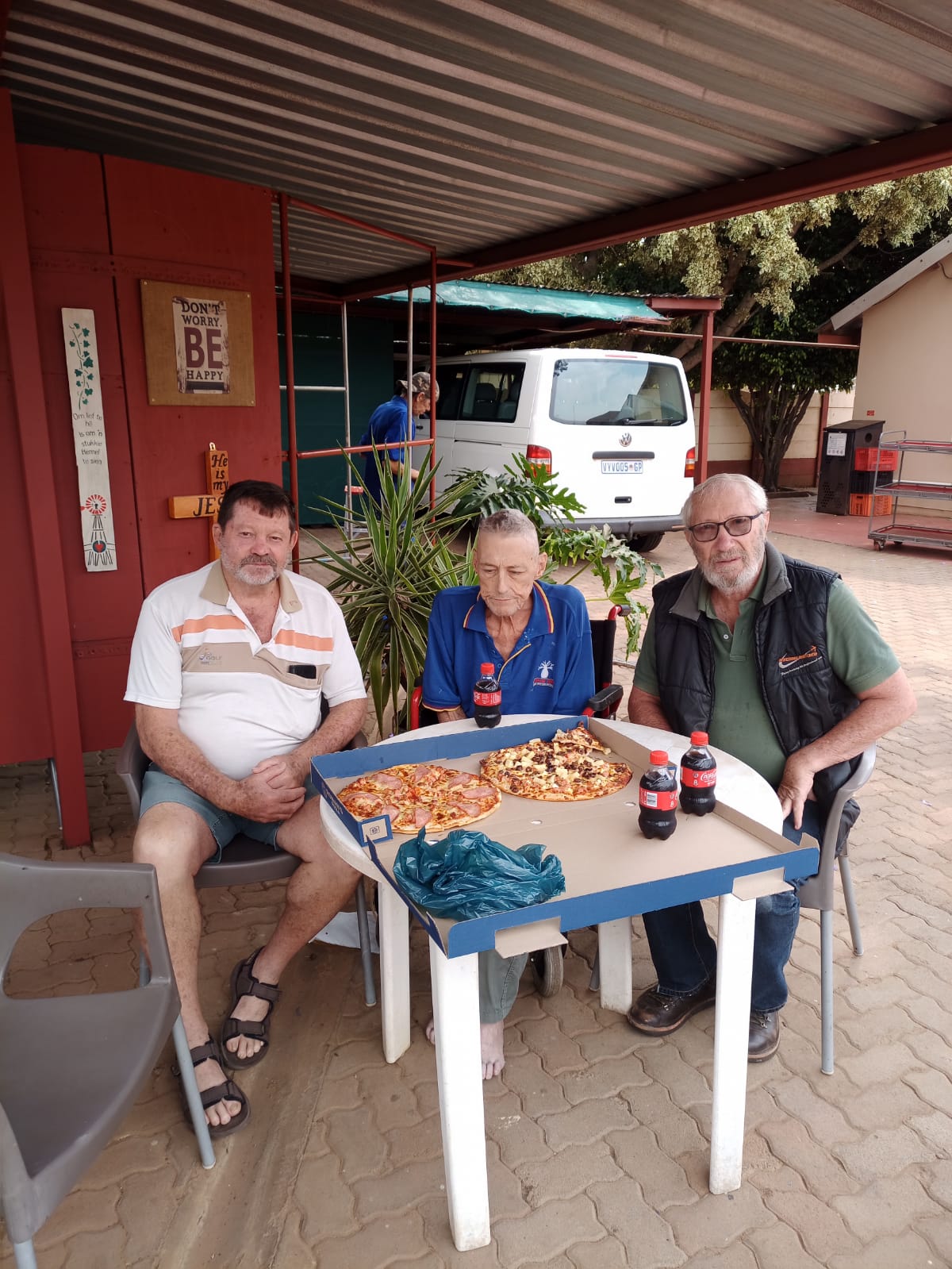
From left to right: Barry Swart, Roy Allen and George Archer
Johan Vorster (Selection 8) on behalf of Special Task Force Veteran Association: “Special thanks to ex-Takies, especially from Selection 1 and 2, who visited Roy often during his sickness and arranged some come-togethers with Roy at various venues. Big thanks to Barry Swart from Selection 1 who cared for and assisted Roy in many ways. Special Task Force Veteran Association, all former and serving Takies salute Roy Allen for his unselfish contribution to our country and SAP, and our colleagues who stood by him in his last few months. SALUTE RIP: Roy Allen.
……………………………………………………….
Written by Anemari Jansen and George Archer
Source: The unpublished manuscript of Roy Allen.
